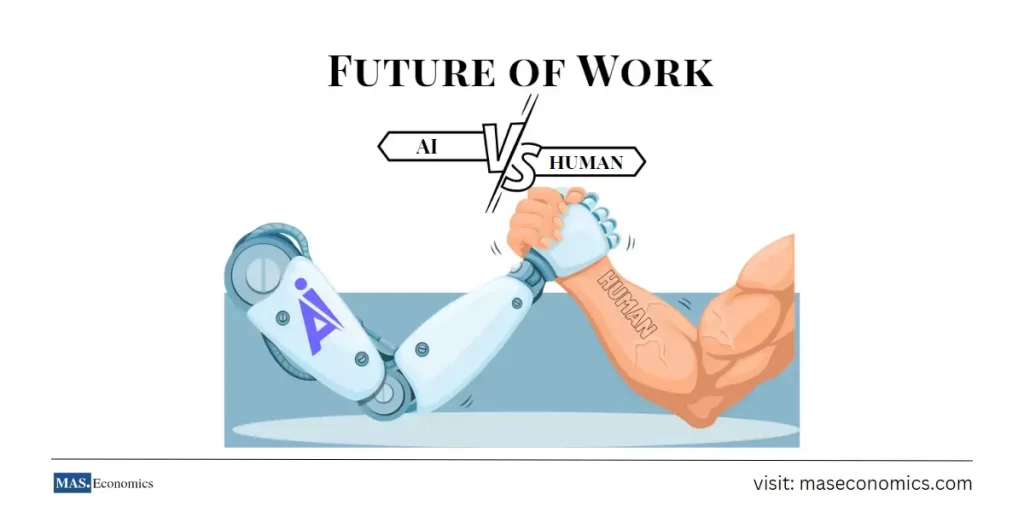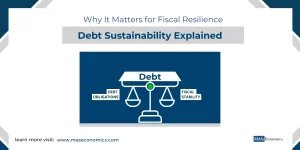Introduction
The rapid advancement of technology and the emergence of Automation and Artificial Intelligence (AI) have sparked debates surrounding the future of work. These technological leaps come with massive opportunities to increase productivity and economic growth, yet they also threaten to displace workers and widen income inequality.
For instance, ChatGPT and Google Bard (Gemini) show how technology uses AI to create more effective digital solutions. This could have a significant effect on occupations such as manufacturing, finance, and transportation by automating manual tasks. Additionally, this could lead to new opportunities that require significant creativity, problem-solving, and interpersonal skills.
I will extensively analyze how automation and AI can affect jobs and wages.
Research by McKinsey Global Institute states that up to 375 million workers may require new skills or job changes by 2030 due to automation and AI. This trend could stretch across different industries, with some predicting that 47% of US occupations are in danger of becoming automated soon (Frey & Osborne, 2017). This sparks questions about job losses, wage stagnation, and widening wealth disparity.
While some believe automation and AI will lead to new job creation, others remain doubtful about their advantages. The World Economic Forum (WEF), 2020, warns that these technologies may produce even more significant inequalities since they mainly benefit those who own capital. Therefore, understanding how automation and AI affect employment and wages is necessary for us to come up with solutions for the challenges posed by these trends.
To assess the impact of automation and AI on jobs and wages and provide possible solutions, this article explores both their benefits and drawbacks to contribute to a more informed public discussion on the matter.
Understanding Automation and AI
Automation and AI can revolutionize various industries and jobs, from production to finance to healthcare. To understand these technologies’ impact on employment and wages, we must consider how substitutable machines are compared to human labor and how they could complement each other instead of replacing people.
Some tasks, like manual labor, are easier to automate, while others requiring higher skills may be more difficult. These could lead to increased productivity and new job opportunities in medicine or law.
However, the effects of automation and AI on jobs and wages may not be evenly distributed across occupations and industries, with some being more susceptible than others. A study from the Brookings Institution has demonstrated that jobs that require repetitive physical tasks, such as those in manufacturing or food service, are at risk for automation. Similarly, workers in occupations with a high risk of automation experienced slower wage growth.
Understanding the complexities of automation and AI is essential for evaluating its impact on jobs and wages in the future.
Impact on Jobs and Wages
The impact of automation and AI on jobs and wages is a highly contested topic among economists and policymakers. Optimists maintain that AI and automation could create new job opportunities and raise productivity, while pessimists are worried about the possibility of job displacement and wage stagnation.
Job Displacement
The introduction of AI and automation has raised fears of significant job losses. According to some estimates, hundreds of millions of jobs might be eradicated by 2030 due to these technologies. All industries could be affected, from manufacturing to finance and transportation. However, it is essential to remember that not all occupations will be equally impacted – those that require creativity, problem-solving abilities, or social interaction are less likely to be automated than those involving repetitive tasks.
Wage Stagnation
The impact of AI and automation on wages is another big concern. Recent data suggests that productivity has grown at a faster rate than wages for the majority of workers in the US (Economic Policy Institute, 2019). This phenomenon is likely to persist as automation and AI become more prevalent. Additionally, a report from the Organization for Economic Cooperation and Development (OECD) states that those in low-skilled or repetitive roles are more vulnerable to stagnant or decreasing salaries.
New Job Opportunities
AI and automation present risks and potential opportunities. A study from Accenture estimates that 2.3 million new jobs might be created in the United Kingdom alone by 2030 due to AI (Accenture, 2018). Furthermore, these technologies could make production more efficient and lead to increased economic growth, as suggested by a report from the Information Technology and Innovation Foundation, which forecasts an annual GDP increase of 3.5% in the US.
The effects of automation and AI on jobs and wages are complicated and diverse. While they may open up new employment possibilities, they also carry job displacement and wage stagnation concerns. Those involved in policy development must recognize all potential implications and develop strategies accordingly to combat any negative impacts.
The Potential Benefits
The potential negative impacts of automation and AI on jobs and wages have been well documented; these technologies also offer a range of potential benefits. Here are some of the key benefits of automation and AI:
Increased Productivity
Automating routine tasks enables workers to focus more on complex and creative activities that require human skills, such as critical thinking, problem-solving, and decision-making.
The McKinsey Global Institute has estimated an additional 1.4% annual global productivity growth from automation and AI. Similarly, Accenture’s research showed that AI could potentially boost UK labor productivity by up to 25% by 2035.
Improved Quality of Work
Automation and AI can lead to improved quality of work and customer service. By automating routine tasks, workers can focus on more complex activities that demand higher-level skills, increasing job satisfaction and mental health outcomes. Automation can also reduce workplace injuries by eliminating hazardous tasks, as demonstrated by a National Institute for Occupational Safety and Health study.
Improved Customer Service
Additionally, AI-powered chatbots and virtual assistants can help improve customer interactions with personalized responses, while AI analytics can provide companies with insights into customers’ needs and preferences. A report from Capgemini showed that 75% of those who adopted AI-powered customer service reported increased customer satisfaction.
Innovation and New Business Models
Automation and AI can also spur innovation and create new business models. These technologies can help companies identify growth opportunities and develop new products and services. Furthermore, automation and AI can disrupt traditional business models and create new markets, such as Uber and Airbnb.
Considering both the positive and negative implications of automation and AI is vital. Doing so will assist in finding ways to maximize their potential benefits while lessening any adverse effects.
Future recommendations for Policy
The rising influence of automation and AI on jobs and wages has left policymakers with the issue of maximizing its advantages while minimizing the drawbacks. Possible policy solutions to address this include:
Learning and Training
A way to address automation and AI’s impact on jobs is by promoting lifelong learning and training. This can allow workers to have the right skills that are relevant in the changing labor market. According to a WEF report, such investments could help alleviate its effects. A study by the OECD found a correlation between higher levels of adult learning and lower unemployment rates.
Universal Basic Income
Universal Basic Income has been proposed as a policy solution. UBI is a type of social security where all citizens or residents receive an unchanging sum from the government. Advocates believe it could help with automation and AI’s impact on jobs by providing financial support for those affected, reducing income disparity, and encouraging economic growth. However, detractors say it could discourage work and increase taxes, and inflation and that UBI alone may not be enough to counter its effects on employment and wages.
Regulation and Oversight
Another policy solution is introducing regulations and oversight to ensure that automation and AI are used beneficially. Establishing monitoring bodies could also help observe the impact of automation and AI on employment and wages and suggest necessary policy changes. The Brookings Institution has proposed creating a ‘Digital Trust Fund’ to aid those affected.
Public-Private Partnerships
Public-private partnerships have been suggested, too, with these collaborations bringing together government, businesses, and other stakeholders. These could finance R&D for technologies compatible with human labor and provide training and upskilling programs.
The impacts of automation and AI on employment and wages are complicated and require various solutions. The introduction of lifelong learning and training, UBI, regulating the use of these technologies, and public-private partnerships are all potential solutions that have been put forward. Policymakers must reflect on these carefully to ensure they only reap their benefits while avoiding adverse effects.
Conclusion
The impact of automation and AI on jobs and wages is a complicated matter that demands thoughtful consideration. These technologies can potentially increase productivity and create new opportunities but could leave those with low skills vulnerable.
To meet these challenges, policymakers must invest in education/training for workers, provide income support and job retraining for those displaced by automation and AI, and enforce regulations to guarantee that these benefits are fairly shared. Furthermore, the ethical implications of these technologies should not be neglected either – it is vital to consider how they will affect society, such as privacy and bias.
Automation and AI adoption is no longer a question of ‘if’ but rather ‘when’; collective efforts from leaders in policy-making, business, and labor are necessary to ensure we create an equitable future that benefits all parties.




